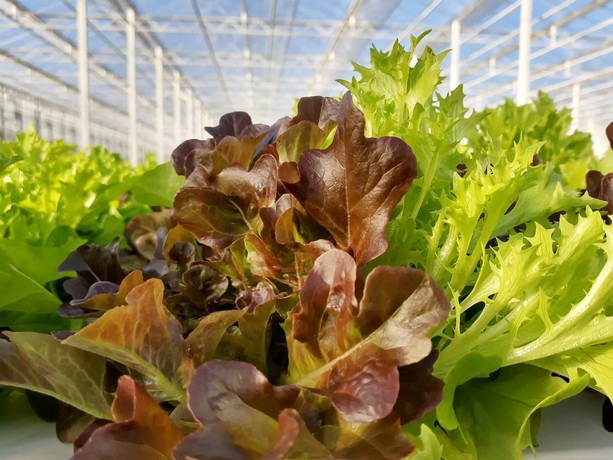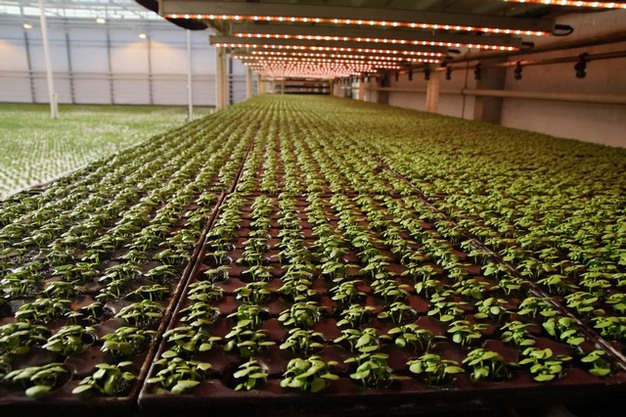For good reasons the greenhouse and vertical farm industry is booming. "Especially in ‘’newer’’ greenhouse crops like leafy greens and herbs the number of suppliers moving to this industry is high and still increasing. There is no lack of promises on high performance growing systems, vision on the best greenhouse for lettuce production, and the next best spectrum growing light sales pitch. All initiatives to feed future generations," says Tim van Hissenhoven with consultancy company Cultivators.
He says that what most of these initiatives have in common is that they sell a promise they more than regularly cannot deliver. "Unfortunately, there is an abundance of strong sales pitches. When you puzzle these promises, we see poorly informed decisions ranging from misunderstanding the market, different climate conditions not accounted for, wrongly calculated plant spacing and unsuitable materials actually impeding growing of the crop. As a result the promising numbers do not meet the expectations. In most cases caused by some unfortunate overlooked things in the development of the business plan:"

Tim shares some of the topics that are often overlooked. The market, for example. "Investigate where the market is, what the demands are, and what the prices will be. Did the market asked you directly to grow? Good! Do you want to grow without knowing the demand? Make sure you know in advance where your product will be sold to, what the price will be and what the quality demands are."
Then there's the cultivation. "Many systems are designed with a pure technology mindset, by itself it is not a problem. It becomes a problem when the technology is not beneficial to the crop. Designing a system without people that understand plants, and more importantly; actually growing plants instead of crops in production facilities often has undesired results. With the growing facilities looking cool and flashy (who does not like the view of multiple stacked layers with purple or white light), but unsuitable for economically feasible plant production."
As a third, do not forget about the system integration. "A growing facility with components that are not well integrated causes inefficiencies, and sometimes quality issues and productivity losses. Buying a growing system and building a greenhouse around it may not be the biggest success when some pieces of the puzzle are missing."
Also remarkably often overlooked is the ROI. "Because in the end your ultimate high-tech facility, simply cannot bring back the money that is invested. Because you can produce a multitude of different crops does not mean it is economically feasible. Especially if you are not able to grow something the market demands, with the right quality specs and in sufficient amounts to pay back the investment. Before the first spade is put into the ground for construction, make sure the economic figures are in place," Tim says.

From their experience, the Cultivators consultants share some takeways, that include not going for companies (suppliers and consultants) that promise you the cheapest buy, or the fastest solution. "Find people with the right mix of competences. The goal must be to develop the best, and the right growing facility for your situation: success by design."
Another takeaway is to invest on people. "You can have invested in the best climate control systems, the most labor friendly growing system, sensors, autonomous growing models, and management support tools. But most importantly of all, you will need motivated people with the right skills and mindset for your operation. Because without them, your project might not deliver the promised results."
"The greenhouse and vertical farming industry has many trustworthy technology suppliers. Find people that can bring you in contact with the right network of companies," Tim concludes.
Easy to criticize, but what are they bringing to the industry? Cultivators developed courses and support services for growers, investors, and technology suppliers. "Our aim is to grow your business by realizing better projects everybody in the process needs the knowledge to make the right decisions. To bring this industry to the next level we need better understanding of the plant, the market and the demands," he explains. "Our team of experts will guide you through the process of business idea, to the design phase of your leafy greens, herbs and potted herbs facility, and support you from construction to commissioning. And when needed, support or organize the daily operation of your facility. That is our commitment."
For more information:
Tim van Hissenhoven (e-mail)
Cultivators
info@cultivators.nl
cultivators.nl
